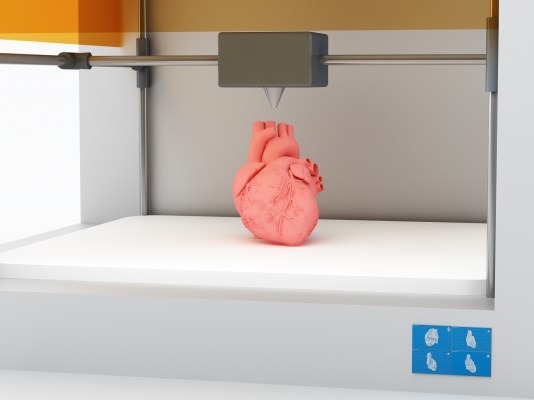In 1983, Chuck Hall, the father of 3D printing, created something that was equal parts simple and earth-shattering. He manufactured the world’s first-ever 3D printer and used it to print a tiny eye wash cup.
It was just a cup. It was small and black and utterly ordinary looking. But that cup paved the way for a quiet revolution, one that today is changing the healthcare industry in dramatic ways.
As healthcare costs in America continue to skyrocket, with no political solution in sight, this technology could offer some direly needed relief.
Here are just some the ways in which 3D printing is already revolutionizing the healthcare industry.
Personalized prosthetics
I love to tell the story of Amanda Boxtel, who came to me a few years ago complaining that her robotic suit, a gorgeous piece of design from Ekso Bionics, was uncomfortable to wear. Amanda is paralyzed from the waist down, and while this suit gave her the gift of movement, it couldn’t give her the symmetry and freedom of range of motion that she, like all humans, craved.

Source: Scott Summit, Charles Engelbert Photography
Unlike traditional prosthetics, which are mass-manufactured like any other traditional factory-produced good, 3D-printed prosthetics are custom-tailored for each individual user. By digitally capturing Amanda’s unique measurements, I was able to build her a custom-fit suit, much like a tailor would, creating a beautiful, lightweight design that fit Amanda’s body down to each distinct millimeter.
This same technology is now being harnessed to create beautiful conformal ventilated scoliosis braces, supports for amputees and more.
Bioprinting and tissue engineering
Writing in a recent issue of the Medical Journal of Australia, the surgeon Jason Chuen alerted his colleagues to a major technological breakthrough that could eventually do away with the need for human organ transplants. Here’s how it works:
3D printing is performed by telling a computer to apply layer upon layer of a specific material (quite often plastic or metal powders), molding them one layer at a time until the final product — be it a toy, a pair of sunglasses or a scoliosis brace — is built. Medical technology is now harnessing this technology and building tiny organs, or “organoids,” using the same techniques, but with stem cells as the production material. These organoids, once built, will in the future be able to grow inside the body of a sick patient and take over when an organic organ, such as a kidney or liver, fails.
3D-printed skin for burn victims
It may sound like something out of Mary Shelley’s “Frankenstein,” but the implications — and cost savings — make this technological breakthrough in 3D printing particularly immense. For centuries, burn victims have had incredibly limited options for healing their disfigured skin. Skin grafts are painful and produce terrible aesthetics; hydrotherapy solutions offer limited results. But researchers in Spain have now taken the mechanics of 3D printing — that same careful layer-upon-layer approach in which we can make just about anything — and revealed a 3D bioprinter prototype that can produce human skin. The researchers, working with a biological ink that contains both human plasma as well as material extracts taken from skin biopsies, were able to print about 100 square centimeters of human skin in the span of about half an hour. The possibilities for this technology, and the life-changing implications for burn victims, are endless.
Pharmacology
Finally, 3D printing also has the potential to upend the pharmaceutical world and vastly simplify daily life for patients with multiple ailments. So many of us take dozens of pills each day or week, and the organization, timing and monitoring of these multiple medications and their diverse drug interactions and requirements (morning, night, with or without food) is utterly exhausting.
But 3D printing is the epitome of precision. A 3D-printed pill, unlike a traditionally manufactured capsule, can house multiple drugs at once, each with different release times. This so-called “polypill” concept has already been tested for patients with diabetes and is showing great promise.
The bottom line
The medical world, in which treatments, organs and devices are an integral part, stands to be revolutionized by the vast promises of 3D printing. With precision, speed and a major slash in cost, the way we treat and manage the health of our bodies will never be the same. And that’s something to celebrate.
